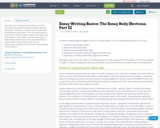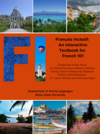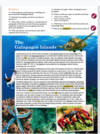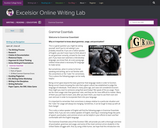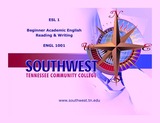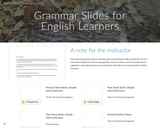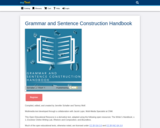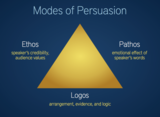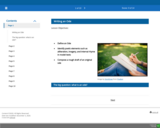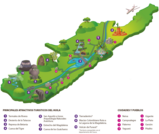Plagiarism definitions are many:When it comes to spoken words, plagiarism means stealing ideas and thoughts of other people to claim them as one's own. Speaking of written words, plagiarism is defined as a lack of original content in a writing piece.Dictionaries call plagiarism "stealing and passing off ideas or words of another as one's own," and "presenting as new and original an idea or product derived from an existing source." (Merriam-Webster)Plagiarism is a persistent problem. People do it unknowingly or willingly, and a large percentage of accusations corresponds to the academic world: students plagiarize writings for many reasons, use all possible types of this offensive act, and don't realize all the consequences. What they should try to do is be aware of plagiarism and avoid it in academic writings, citing and referencing their works accordingly.What are plagiarism types?The digital era calls the shots, so today we have many new forms of plagiarism, both intentional and unintentional ones. Academic and journalistic are the general names for plagiarism types, but both involve several variations. They are as follows:Full plagiarismAlso known as "direct" or "complete" plagiarism, this form appears when you copy the content from a source as it is, word for word.Characteristics: no original research, no changes in lexical items or punctuation, no differences (even the tiniest ones) between two content pieces.Full plagiarism is the sin of incompetent authors or those who are mere lazy to give it their best shot and create something original. Speaking of the academic world, full plagiarism leads to a student's expulsion.ParaphrasingSome call it "partial" plagiarism because it happens when a writer takes data from several different sources, combines them with minor changes in language, and represent as original ideas. Paraphrasing itself is not plagiarism, and it's okay to use it if citing and referencing all sources. But it becomes so when represented as a rewrite of the original with no attributions.Characteristics: presenting the ideas from original sources in different forms, changes of sentence structure, active to passive voice manipulations, no cites or references.In the case of paraphrasing, an author takes pains to sound original and yet doesn't provide any first-hand research in his writing. In academia, this form of plagiarism signals about a lack of knowledge on the topic or not enough writing skills to expand ideas.Minimalistic plagiarismIt's a kind of paraphrase too, but a more professional one: a writer copies ideas but changes the flow and order in which they are presented in the source. This form of plagiarism is difficult to detect because it does seem original, especially if checked with plagiarism detection software.Characteristics: changes in sentence structure, statements order, and writing style of the source; paraphrasing several sources in one text with no attributions; active use of synonyms.Minimalistic plagiarism happens when a student lacks time or patience to create original work but is ambitious of recognition and high grades.Mosaic plagiarismAlso known as a poor rewrite, synonymization, or patch writing, mosaic plagiarism happens when an author takes phrases from the original, rearranges them in order, and represent in own work without citing. Or, when he keeps the same sentence structure and meaning but replace every word with synonyms so his work would look like a newly written one.Characteristics: rearrangements in word and phrase order, excessive synonymization, a flow changes, no attribution to sources.Students do love this type of plagiarism, and it's most common in their academic works. Mosaic plagiarism signals about procrastination, lack of knowledge, and ignorance of plagiarism consequences.Accidental plagiarismIn plain English, it's unintentional copying of others' ideas and words. Speaking of students, they might fall into a trap of accidental plagiarism when don't know they borrow concepts from others and, therefore, neglect to reference sources because they do consider their writings original.Despite its accidental nature, this form of plagiarism is considered as copyright infringement and scholar ethics violation. So, the consequences are going to be as ominous as in the case of other plagiarism types.Self-plagiarismThe trickiest one, self-plagiarism occurs when a student decides to submit his previous work to another class. Or, when he takes ideas, concepts, and passages from his other essays and use them for new assignments with no permission from both professors.This form is the most controversial one, and many still argue if they should consider it plagiarism at all. On the one hand, your work is your intellectual property, and so you can use it wherever you want. On the other, this work is no longer original after you've submitted it. It's a kind of bluff: the audience waits for new information from an author, but he misleads them and gives something they've heard already.In the world of academia, it would be wise for students to consult professors on the institution's policies to make sure it's okay to cite papers, previously submitted to other classes.Source plagiarism, or wrong referencingAuthors refer to each other in their works. And when a student refers to a cited source rather than a primary one, it's called source plagiarism.Source formatting matters, either. Improperly cited sources, false referencing, or no references at all are the cases of plagiarism. Reasons for why a student avoids references in a paper vary:He asked a ghostwriter to create an essay, so he just can't refer to it.He used a source to steal arguments and just copied them with no changes.He used the essence of a source and just changed several keywords.He combined several sources in a paper for it to look original.It often happens that a student doesn't know how to use citations and references in his copy. It's not the case of plagiarism, but a professor may consider it so when detecting some misinformation in a list of references. This includes:Using wrong sources (see the above source plagiarism).Neglecting footnotes: a student cites an author but doesn't provide a location of the source.Using fake sources: a student plagiarizes the entire text of his essay and yet provides a long list of references to "prove" its original nature.Proper citation is a must in the academic world, so writers need to know how to use and structure references to avoid accusations of plagiarism. How to avoid plagiarism issues in writings?Plagiarism consequences are many, and most are not as evident as students might think. Copyright infringement and intellectual property theft are legal issues, and they might lead to far stronger effects than poor grades or reputation loss. To avoid them, stop believing all myths about plagiarism in academia and start doing in-depth research on assigned topics. It will allow understanding key concepts and structure a future essay right.Other tips on avoiding plagiarism in writing:Document every source you use. Make sure to format it right: don't forget about quotation marks when citing someone's words.Spare no time on research.When in doubts, ask peers to check your list of references and say if you format it right. The same goes for research: friends might help to find proper sources or recommend some.Never ask anyone to write essays for you: any ghostwriters, any custom services, any downloads from the web.PRO tip: after you completed writing a paper, run it through a pro commercial software that will find unintentional plagiarism in your text.Plagiarism is about ethics and principles. It's not enough to know the definition and consequences of the issue to avoid it. What matters is your determination: stay honest, do research, create original works for more people to learn new ideas, refer to other authors, and remember to mention their names when citing.
